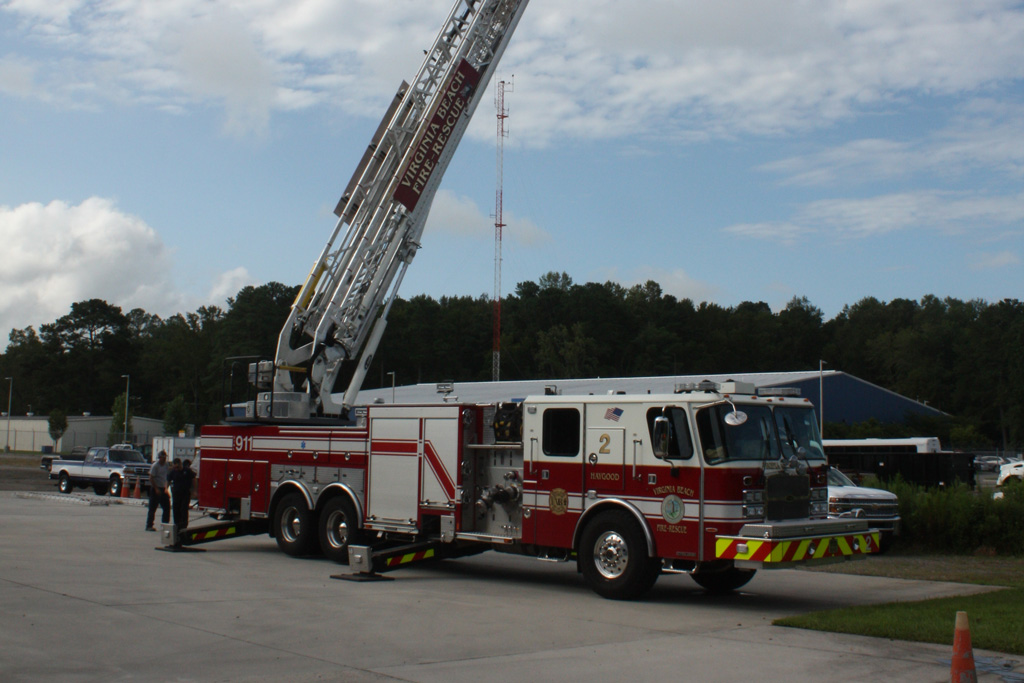What You Should Know About Aerial Device Testing

Fire departments rely on aerial devices every day, as they are an integral component to successfully carrying out the department’s mission to save lives and protect property.
Elevated platforms, sectional ladders and booms all fall into the category of an aerial device. Testing and inspection of these devices is critical to ensuring equipment safety and to preventing failures. Industrial Inspection and Analysis is the industry leader in aerial device testing and top-to-bottom fire truck inspections.
The most common reasons for device failure are lack of, or improper, maintenance and the weakening of metal components on the device. This weakening is often referred to as metal fatigue and occurs over a period of time from use and stress. Metal fatigue can create small cracks that compromise the integrity of the metal, which can in turn compromise the device’s reliability in its entirety.
The first common issue, lack of proper or regular maintenance, is two-fold, because prevention in this area requires regularly scheduled testing in tandem with routine maintenance and post-run visual and operational checks. All of which must begin with a complete understanding of the National Fire Protection Association, the NFPA’s, testing requirements and regulations.
A brief review of the current NFPA requirements are as follows:
Inspection and Maintenance of Aerial Devices
Fire apparatus equipped with aerial devices must be inspected and tested in accordance with aerial device manufacturer’s recommendations.
Aerial devices equipped with air storage must be inspected for hydrostatic test dates specified by [the] manufacturer or appropriate government agency.
Performance Testing of Aerial Devices
Fire apparatus equipped with aerial devices must be inspected and tested.
Inspection and testing must be done at least annually visual, weld, bolt and pin, aerial ladders, rotation gear and bearing etc.
Also required is that within 24 hours of the use of the apparatus, a visual or operational check should be completed by qualified personnel as deemed by NFPA guidelines. If the device was placed under an unusual amount of stress, damaged, or used beyond the manufacturer’s recommendations, then the device needs to be inspected by a qualified technician as per NFPA guidelines.
Otherwise, if the equipment is not used within a 7-day period, these checks are to be completed on a weekly basis. Further, the requirements also set forth a standard for creating a checklist, recording what is discovered during an inspection, and maintaining these records. Both the inspection information as well as any subsequent repairs or deficiencies that are performed or corrected, shall be recorded, and, of course, repairs are only to be performed by qualified technicians.
In regard to other regulatory testing that is only to be completed by a qualified professional, as defined in NFPA 1911, Chapter 19, the NFPA requires these be completed annually and also every five years by using non-destructive testing (NDT). These annual visual inspections, operational tests, and NDT services must be performed by a certified Level II Technician.
NDT is an important technology used for inspecting components and locating cracks or deformities that will not only affect compliance but could also affect operator safety as well as equipment reliability. This testing method is used because of its ability to detect issues without altering or destroying the equipment or the ability to use the equipment. Some common NDT methods that IIA’s experts use include, metal hardness and ultrasonic testing, radiography, magnetic particle inspection, and liquid penetrant inspection. Again, these tests are used to inspect and detect cracks or metal fatigue within any area of the device, such as the outrigger, the ladder or its rails, bolts, or even the frame, that might be causing structural damage and unsafe conditions.
One last but very important thing to reiterate and note: NDT, according to NFPA guidelines, should be conducted every five years and also when your device has been stressed over its limits or somehow damaged. There is oftentimes confusion surrounding this particular regulation even though it is listed in the regulation codes as a supplemental test not a substitute test. Unfortunately, many times departments are unaware of or confused by these particular and specific requirements and as such unknowingly fall out of compliance.
IIA not only takes care of all your aerial device inspections, but we are also a recognized industry leader performing top-to-bottom NFPA 1962 standards fire truck testing and inspection, including fire hose, pump and ladder testing.
Our team of friendly, knowledgeable, and highly skilled Level II technicians are eager to connect with you and conduct all necessary visual and operational tests, including NDT, as well as tracking the maintenance and testing needs of your fleet. We deliver timely and accurate inspections that ensure safety and reliability, which means safety and compliance as well as getting the most out of each device over the life of the equipment.
NEED A QUOTE?
Simply fill out your name, number, and email below and someone from our team will contact you within 24 hours.




